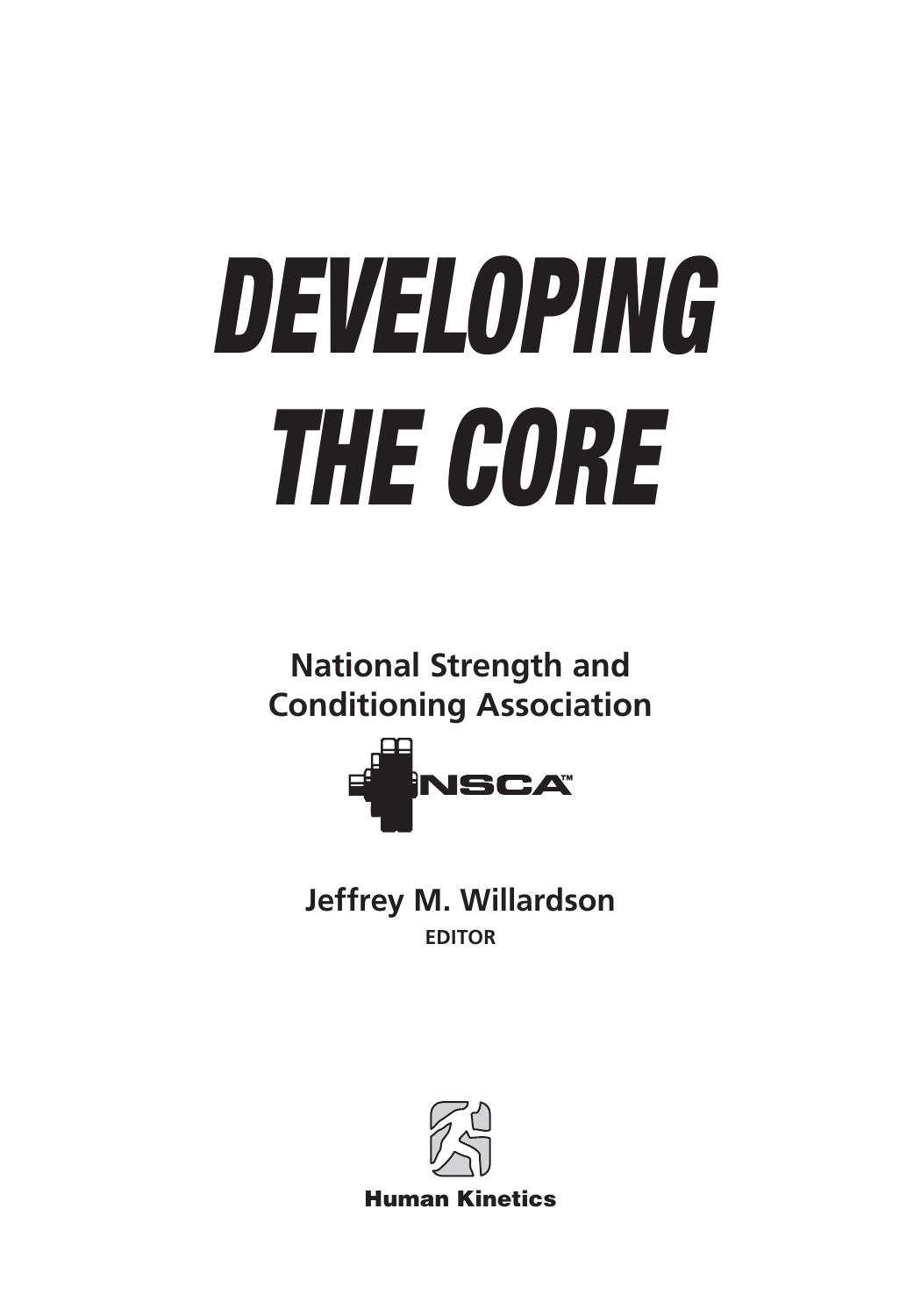Developing the Core by National Strength & Conditioning Association

Author:National Strength & Conditioning Association [National Strength and Conditioning Association; Jeffrey M. Willardson, Editor]
Language: eng
Format: epub, pdf
ISBN: 9780736095495
Publisher: Human Kinetics
Published: 2014-08-24T16:00:00+00:00
Use a Variety of Training Implements
Maximal core muscle strength and power can be developed by externally loading the body with the use of dumbbells, weight plates, medicine balls, and resistance bands through the various planes. Hex dumbbells are formed from a cast and are distinctly identified by their unique hexagonal flange. They are relatively inexpensive to purchase, and the flanges of the lighter dumbbells (up to 30 pounds, or 14 kg) are easy to grip and hold on to. Hex dumbbells provide a good way to increase exercise intensity for exercises such as the crunch, side-to-side twist, side bends, hyperextension, glute–ham raise, lateral flexion, and woodchop.
Weight plates are another good choice. Some companies manufacture weight plates with symmetrical openings on both sides of the plates that are meant to act as built-in handles. This helps prevent dropping and makes handling heavier loads safer for the user when performing core muscle exercises.
Resistance bands can also be used and are unique because they allow the exerciser to load the core musculature in various static positions and dynamic movement patterns that dumbbells and weight plates cannot. A good example is the resistance band walkout exercise. The elasticity of the band is a variable resistance tool for the exerciser and the strength and conditioning practitioner to use in core muscle conditioning programs.
Reactive and nonreactive medicine balls are very effective implements that can be used to develop power of the core musculature. Reactive medicine balls bounce (react) upon contacting a hard surface and allow the user to perform repetitions in rapid succession. For example, side-to-side throws performed with a reactive medicine ball allow for a release and immediate catch of the ball to perform the next repetition. If successive repetitions were performed at a high speed, improvements in reaction time and eye–hand coordination could be developed as secondary qualities to rotational power. This might be desirable for athletes such as golfers, tennis players, and softball or baseball players who require rotational power, reaction time, and eye–hand coordination for the technical skills of their sports.
However, it is not always desirable to use a reactive medicine ball for developing power. For example, performing medicine ball slams with a reactive medicine ball could cause serious injury from the medicine ball bouncing back and striking the user. Nonreactive medicine balls absorb energy and do not react (nonreactive) upon contacting a hard surface. They can be thrown with maximal force in any direction with no risk of bouncing. For this reason, nonreactive medicine balls can also be effective implements to develop maximum power through all movement planes.
Table 5.3 includes sample power exercises for each of the four core movement patterns.
Download
Developing the Core by National Strength & Conditioning Association.pdf
This site does not store any files on its server. We only index and link to content provided by other sites. Please contact the content providers to delete copyright contents if any and email us, we'll remove relevant links or contents immediately.
Unwinding Anxiety by Judson Brewer(72056)
The Art of Coaching by Elena Aguilar(52246)
The Fast Metabolism Diet Cookbook by Haylie Pomroy(20929)
Rewire Your Anxious Brain by Catherine M. Pittman(18337)
Healthy Aging For Dummies by Brent Agin & Sharon Perkins RN(16933)
Talking to Strangers by Malcolm Gladwell(12915)
The Art of Thinking Clearly by Rolf Dobelli(9951)
Crazy Rich Asians by Kevin Kwan(8912)
Mindhunter: Inside the FBI's Elite Serial Crime Unit by John E. Douglas & Mark Olshaker(8750)
The Compound Effect by Darren Hardy(8542)
Periodization Training for Sports by Tudor Bompa(7946)
Becoming Supernatural by Dr. Joe Dispenza(7869)
Tools of Titans by Timothy Ferriss(7850)
Wonder by R. J. Palacio(7755)
Crystal Healing for Women by Mariah K. Lyons(7734)
Bodyweight Strength Training by Jay Cardiello(7686)
Therapeutic Modalities for Musculoskeletal Injuries, 4E by Craig R. Denegar & Ethan Saliba & Susan Saliba(7606)
Should I Stay or Should I Go? by Ramani Durvasula(7440)
Change Your Questions, Change Your Life by Marilee Adams(7405)
